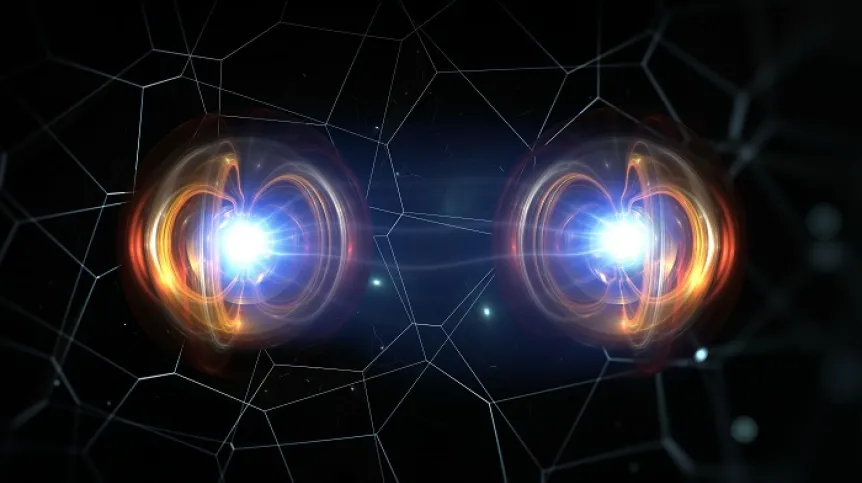
The quantum world will give scientists powerful tools for performing calculations that will enable key medical and environmental research, believes optoelectronics engineer Marek Życzkowski from the Military University of Technology, who conducts research in the field of quantum communication and quantum computer infrastructure.
Scientists at the university are working on quantum computer infrastructure and optical quantum cryptology technologies for data security in ICT networks. Optoelectronics engineers are building a quantum exchange key in fibre optics without the effect of photon entanglement, and improving their own devices for quantum code key generation and exchange. Such data exchange will protect against attacks on fibre optics when the current code encryption keys are no longer sufficient.
At the same time, an entangled state generator is being developed. According to Życzkowski 'a new age of technological revolution is taking place right before our eyes'.
He said: “Experimental confirmation of the existence of tangled states will be expressed in the form of quantum communication with unusual possibilities and security or extremely sensitive sensor systems.”
He added that there is no such thing in the classic world.
He said: “The work of scientists awarded this year and their teams lead to efficient quantum computers, to the idea of quantum cryptography, which is closely related to the awarded Nobel Prize, and to quantum sensors. The quantum world will give us powerful tools for performing calculations that will enable key medical and environmental research.”
The entangled state generator developed at the Military University of Technology, is a contribution of optoelectronics engineers and chemists to the work on new, secure quantum communication based on the phenomenon of photon entanglement. Thanks to this method, it will not be possible to intercept information sent via a fibre optic cable. If the optic cable connections were not secured in advance, in the era of quantum computers it would be easy to take over banking information, find out about stock transactions, intercept political communication or confidential military orders. It has been mathematically proven that quantum communication will be possible. And if someone disrupts it, the devices will notice it immediately.
Dr. Życzkowski said: “Quantum communication will use light quanta that have a very special property - a state of entanglement. Entanglement makes each photon in a pair behaves identically, regardless of the distance between them. An entangled state generator will make it possible to develop such photons.
“If the state of one of them changes, the second photon sent at a considerable distance will also change its state at the same time - to an identical one. “If we consider the first state to be one and the second to be a zero, we can code information by manipulating subsequent tangled photons.”
The security of such a transmission is based on the basic laws of physics. If the 'eavesdropping' party reads the state of the recipient's photon, he immediately disturbs its established state. Both the sender and the recipient immediately see such a change. The attack on the communications channel can be caught by simple optical operations.
The first entangled state generators are based on technologies that are difficult to use, require cooling to very low temperatures and vacuum for transporting photons. The generator developed at the Military University of Technology will work at room temperature. At the same time, the generated pair of entangled photons can be introduced into a standard telecommunications optical fibre, declares the head of the scientific team from the Institute of Optoelectronics.
Breakthrough technologies will protect data exchange in fibre optic networks and standard communication, which will be encrypted with a quantum key. A single-use key will be a collection with unique and random sequences of characters.
Życzkowski said that the generation of individual photons is a big challenge, just like taming them in multi-kilometre sections of fibre optic cable and hitting the right photon at individual moments to modulate it to assign or determine 0 and 1 bit states - and then ensure correct reception.
Consequently, devices and technologies that can be applied in practice are only expected in 10 years. At the beginning, the recipients will be states, including dedicated classified networks, for example military and financial ones, and then telecommunications companies, critical infrastructure and offices.
According to Życzkowski, the ultimate plan of scientists is to develop a quantum computer based on Polish resources. He added that Poles are able to develop optoelectronic devices of a quantum computer built for European needs. Learning about the possibilities of quantum computer technology will define further work on securing telecommunications paths in the future.
PAP - Science in Poland
kol/ zan/ kap/
tr. RL













